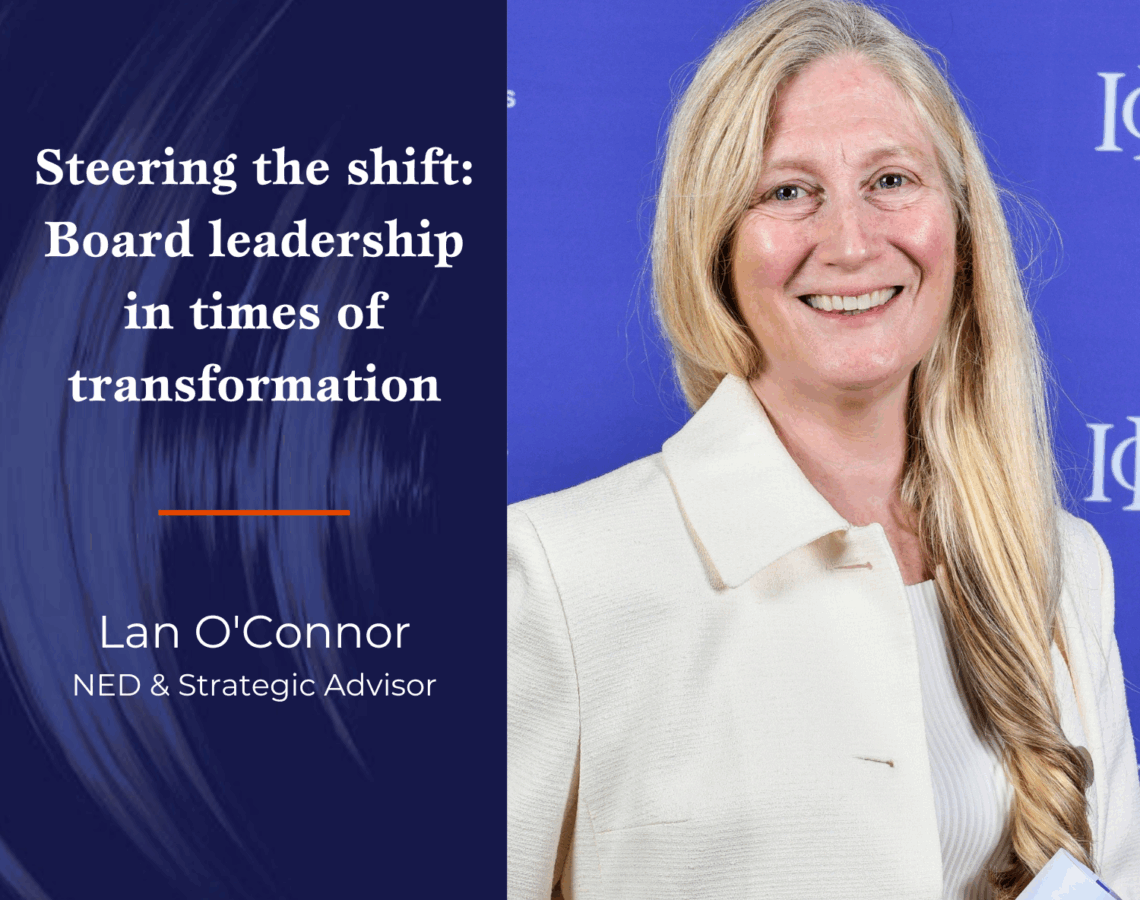Steering the Shift: Board Leadership in Times of Transformation

As a director, you regularly oversee change. But how do you distinguish routine adjustments from true enterprise-level transformation? And how must the board’s role evolve to meet it?
In this podcast, Dr Sabine Dembkowski talks with Lan O’Connor, a global transformation leader. At SAIC, she led IPO readiness and NYSE listing. At Capgemini, she drove its shift to a global operating model. Her experience spans Trinity Business School’s transformation and UK Cabinet Office policy during Covid-19. With global expertise and governance credentials, Lan brings operational rigor and strategic vision to complex change.
Transformation vs. Routine Change
Transformation is not bigger change—it’s “punctuated equilibrium”: a deliberate break from a successful past to secure the future.
Capgemini’s pivot from European leader to global competitor illustrates this: a fundamental rewiring of structure and KPIs while retaining its cultural core.
Key hallmarks of transformation:
- Consensus: Agreement the current state is unsustainable.
- Clear Outcomes: Measurable goals—growth, market share, structure.
- Scale and Focus: It dominates executive and board agendas until achieved.
This is not delegated work—it’s the company’s central story, with the CEO leading and the board fully engaged.
The Board’s Role
For boards, transformation often looks like capital-R Risk. The role shifts from oversight to strategic engagement:
- Challenge the ‘Why’: Probe necessity—what if we do nothing?
- Approve the Destination: Refine and sign off the business case and vision.
- Scrutinise the Approach: Even strong cases fail without sound plans. Test execution risk, resources, and leadership resilience.
Ensure management has both the political will and emotional commitment to see it through.
Mindset and Skills
Transformation demands a new mindset:
- Curiosity & Openness: Challenge assumptions and embrace change.
- Collective Wisdom: Share past transformation lessons.
- Practical Tools:
- Interview Test: Explain its purpose and benefits clearly.
- What, So What, What Next: Keep updates sharp and actionable.
And crucially, get out of the boardroom: visit teams, see demos, and observe change in action.
Do Boards Need Transformation Veterans?
Yes—with clarity. Many directors have seen transformation; few have led it. Direct experience adds empathy, realism, and insight into the human side of change—resistance, fatigue, momentum.
This is not about execution but informed oversight and support, offering executives a critical ally.
The Board as a Partner
Transformation is the ultimate test of board effectiveness. With curiosity, shared experience, and sharp challenge, boards move from passive oversight to strategic partnership, shaping their company’s most important chapter.
Remember to subscribe and never miss an episode of the Better Boards Podcast Series. It’s available on Apple, Spotify, or Google.
To find out how you can participate in the Better Boards Podcast Series or for more information on Better Boards’ solutions, please email us at info@better-boards.com.



